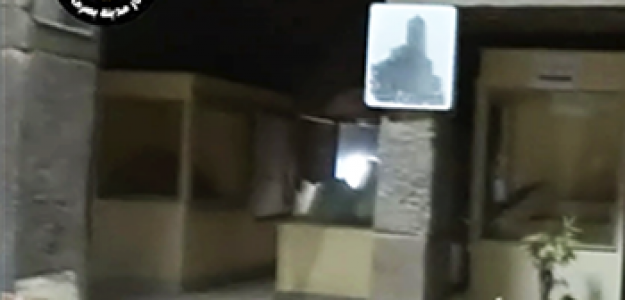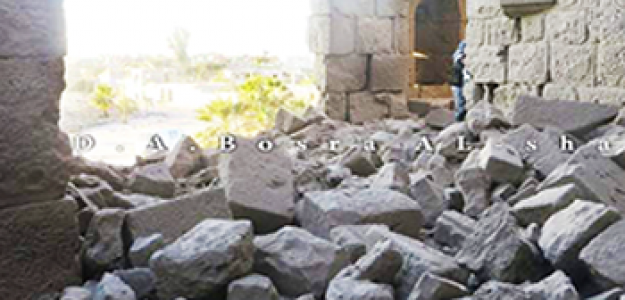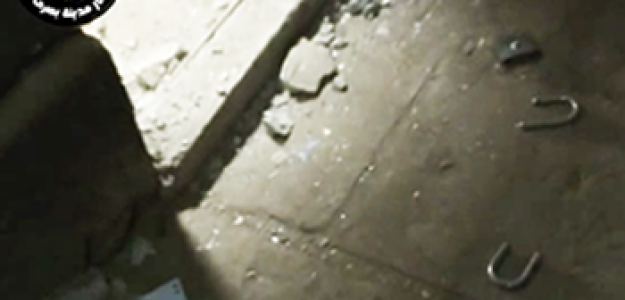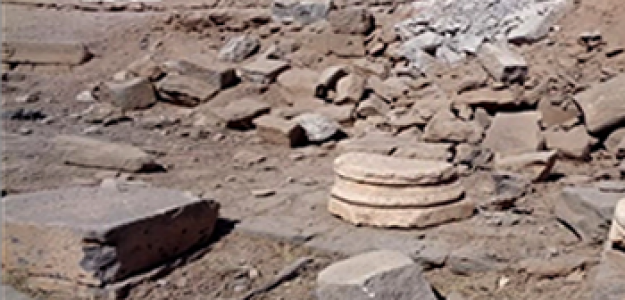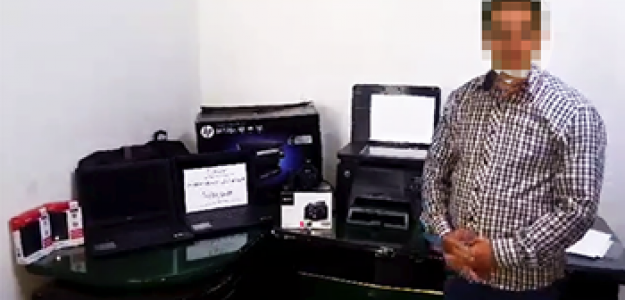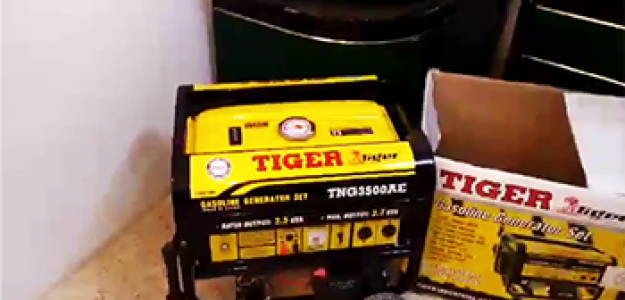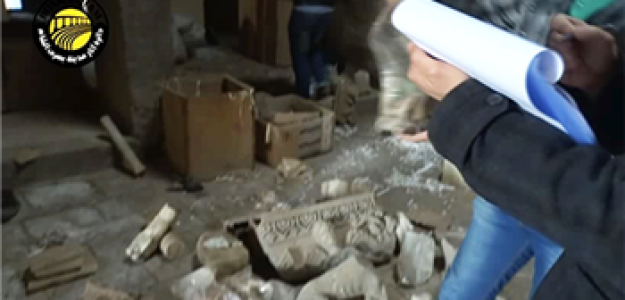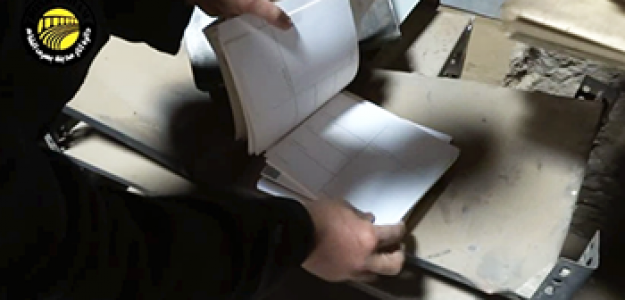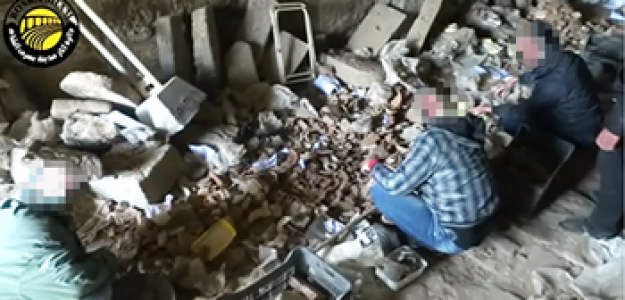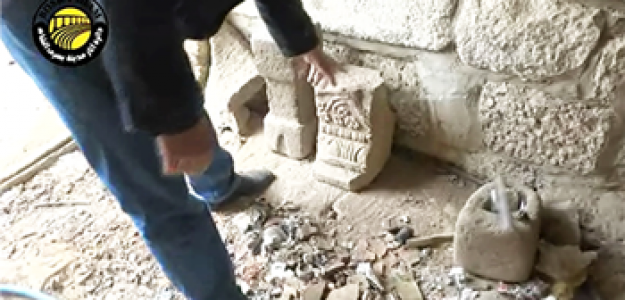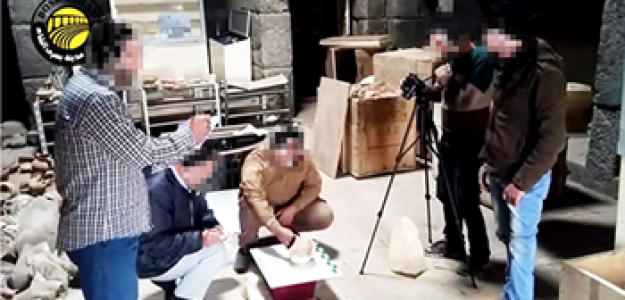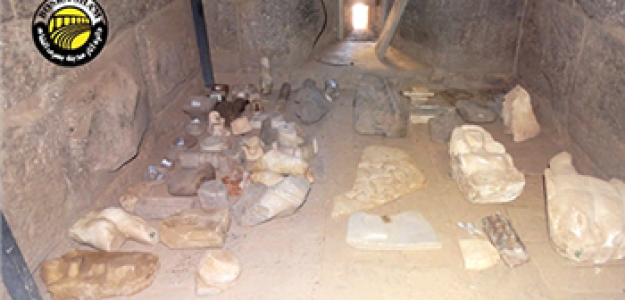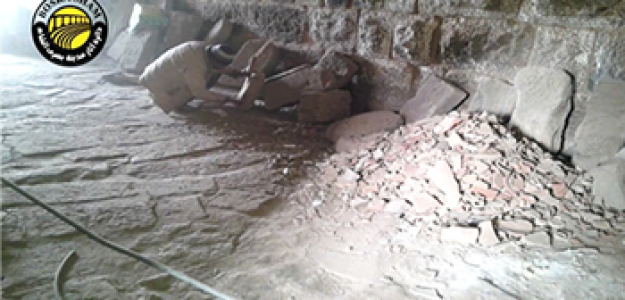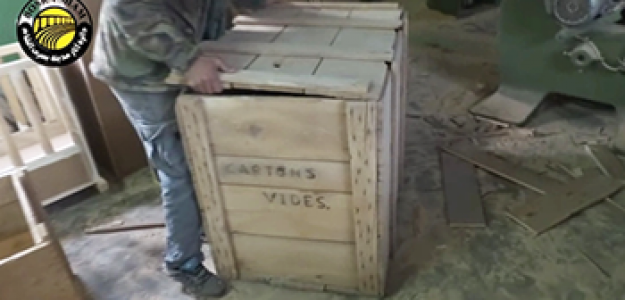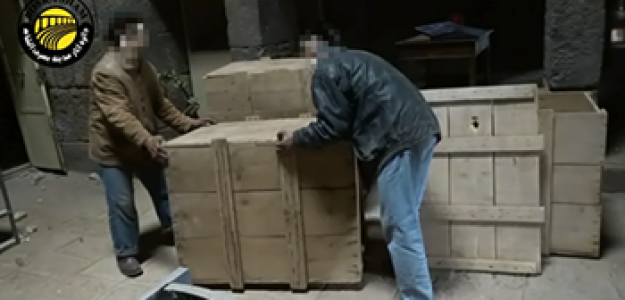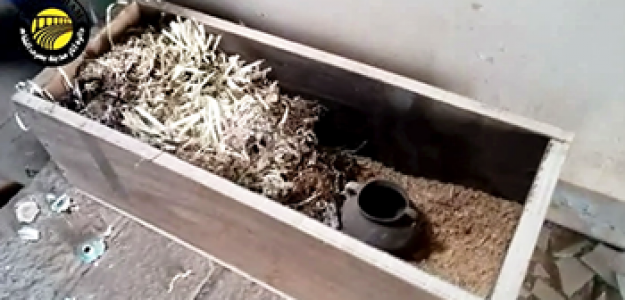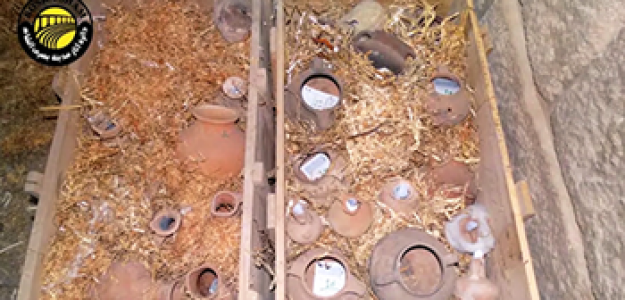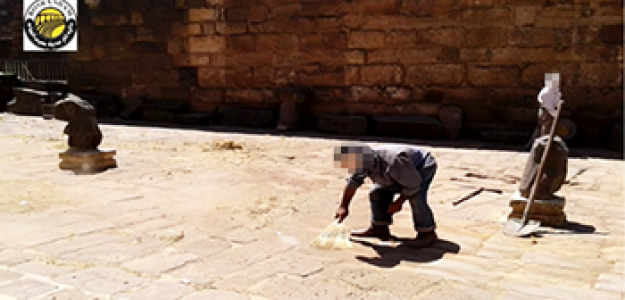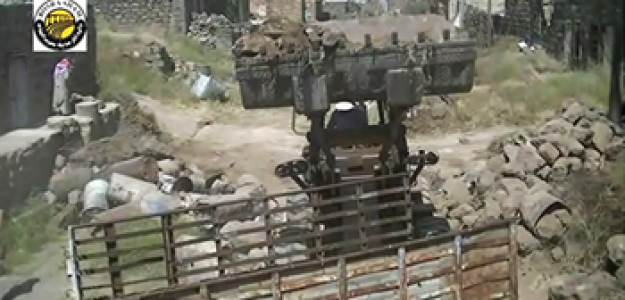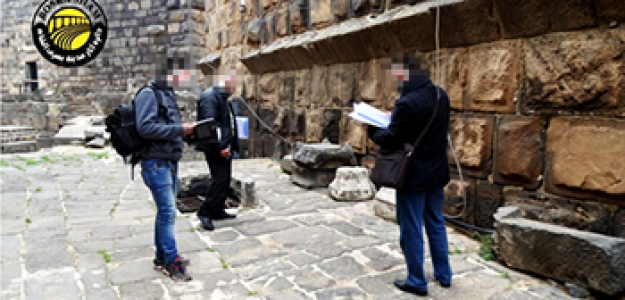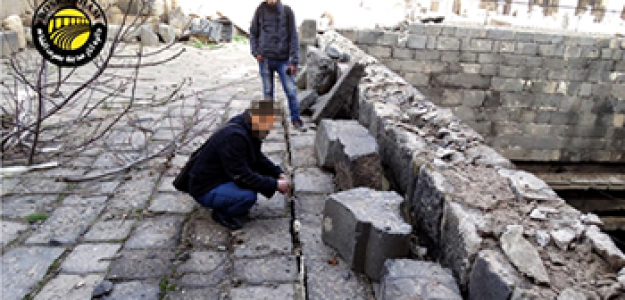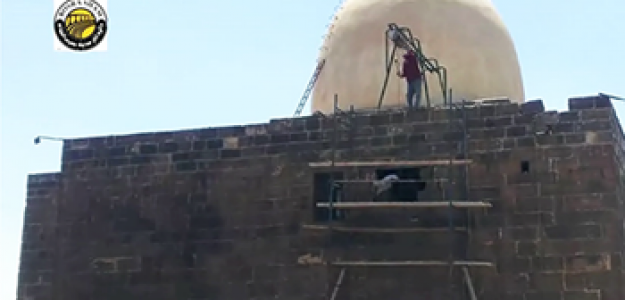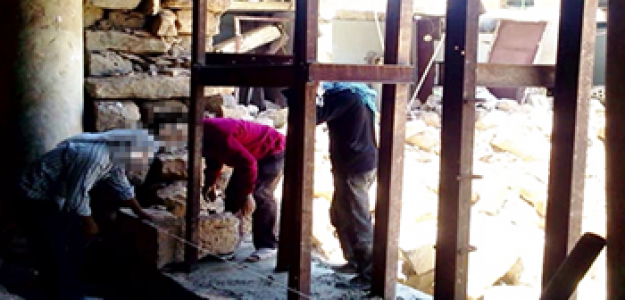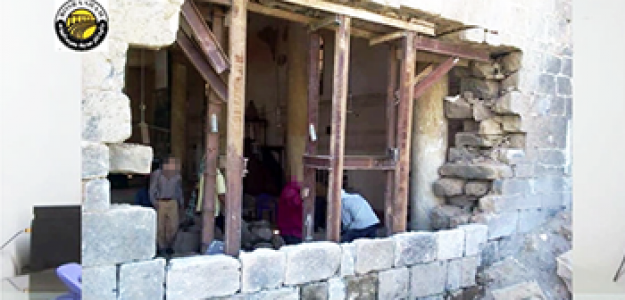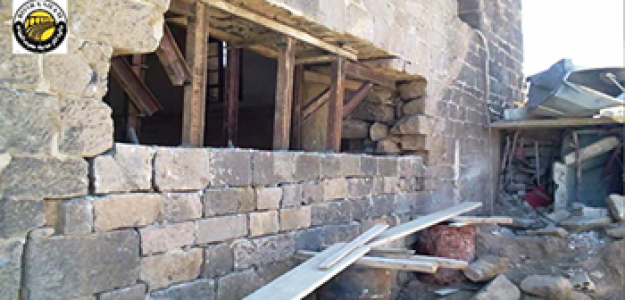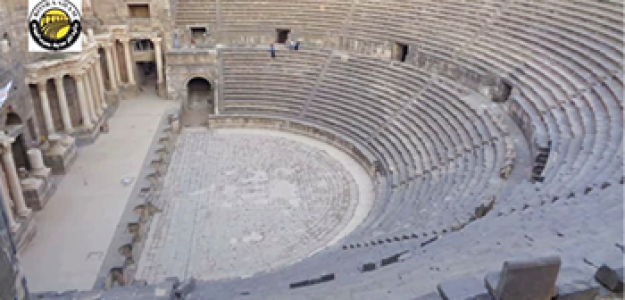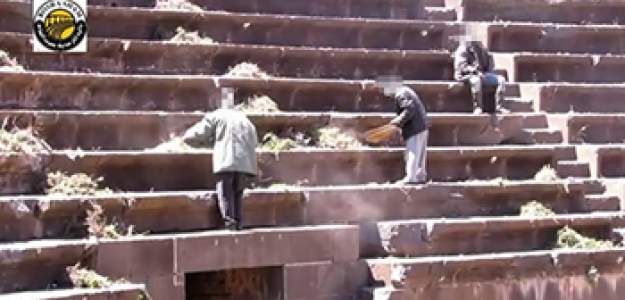
MIGRATION & RESTORATION WORK AT BOSRA AL SHAM
HELPING SYRIANS PROTECT & PRESERVE CULTURAL RIGHTS
ASOR Cultural Heritage Initiatives (ASOR CHI) strives to help Syrians and Iraqis in preserving and protecting cultural rights, particularly rights linked to access to tangible and intangible cultural heritage. Cultural heritage sites have come under increasing assault over the last five years across the Middle East and North Africa; In order to safeguard this heritage and these sites, ASOR CHI implements cultural property protection in Syria and Iraq by: (1) documenting damage; (2) promoting global awareness; (3) conducting emergency response projects and developing post-war reconstruction plans.
Due to the high level of instability caused by the conflict in Syria and ISIL-controlled areas of northern Iraq, much of our work over the past 23 months has focused on documenting damage and destruction rather than the hopeful work of restoration. However, in the past nine months, we have been able to focus some of our efforts on restoration work that empowers Syrians and allows them to have access to (and control) their own cultural heritage In this essay, ASOR CHI will share promising results from work that has been carried out in southern Syria at Bosra al Sham (ancient Bosra). In the coming weeks, we will present essays about work in northern Syrian and parts of Iraq.
The ancient city of Bosra is located in southern Syria and is home to a very well preserved Roman theater, dated from the 2nd century CE, and a number of structures of the Byzantine, Islamic, and Nabatean eras. In addition, extensive ruins of the fortifications, built between 481 and 1251 CE, remain. The city is also home to the Al-Omari Mosque and many other Islamic buildings and ruins. Bosra became a UNESCO World Heritage Site in 2013.
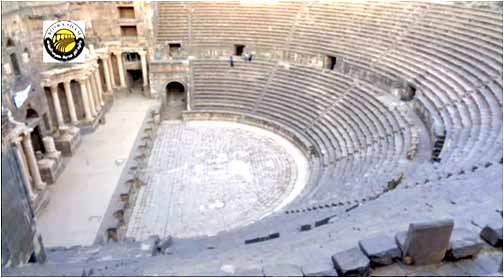
Bosra Theater After Cleaning
The Challenge: Damage to the Ancient City (a UNESCO World Heritage Site)
Unfortunately, the ancient city has experienced significant damage from the war in Syria at the hands of both the Syrian Arab Republic Government (SARG) and opposition forces (see this link for “Bosra” in the index of the ASOR CHI Weekly reports). While the damage and destruction has been extensive over the last five years, there have been some encouraging signs of hope in recent months.
The capture of Bosra al Sham in March 2015 by Syrian Opposition forces ended the payment of salaries to the employees of the Bosra al Sham Antiquities Department. The ancient city, the collections, and the museum lay in ruins. Yet, the Antiquities Department’s skilled heritage professionals still wanted to protect and preserve Bosra al Sham. However, they lacked the means—they had neither the equipment nor salaries to sustain their efforts. At that point, Humanitarian Research Services (HRS), a non-profit group conducting relief work in the region, alerted ASOR CHI to the possibility of providing bridge funding to the Bosra al Sham Antiquities Department (BSAD). In November 2015, ASOR CHI engaged HRS to partner with local Syrians on mitigation and restoration projects. The summary below describes the completed work and provides an example of what might be done in the future if we can raise additional funds.
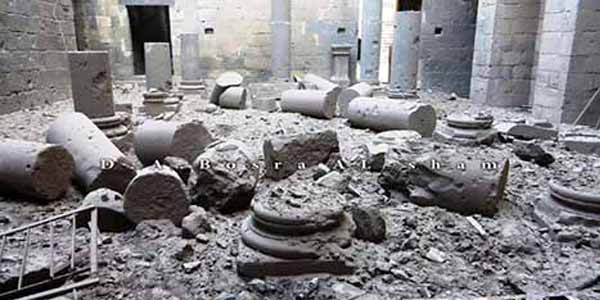
Ayyubid citadel damage in Bosra
Damage to the ancient city and museum caused by combat and looting:
Step One: Purchasing New Equipment, Emergency Collections Assessment, and Placing Artifacts in Secure Storage
The war in Syria left the Antiquities Department without basic equipment or supplies, and they often have had to work without electricity. Fortunately, ASOR CHI’s cooperative agreement with the U.S. Department of State includes funding for several mitigation grants of $5,000 each. The State Department approved a grant to carry out emergency response projects at Bosra al Sham, and HRS acted as an implementing partner. After purchasing a generator, office equipment, computers, and digital cameras, the BSAD team performed emergency collections assessments and site assessments and began rehousing the remaining museum and archaeological storehouse collections. The funding not only provided support for BSAD staff, but also paid wage labor for local carpenters, masons, and other craftspeople.
Because the project takes place in a complex and dangerous war-zone environment, and ASOR CHI can only remotely monitor progress, HRS undertook steps to ensure safety and adherence to best practices through joint planning, monitoring, and evaluation with BSAD. In doing so, HRS developed a close relationship with management staff in Bosra al Sham. HRS has regularly acted as the intermediary for ASOR CHI and BSAD, translating relevant documents and invoices, processing financial transfers, and ensuring accurate record keeping. This relationship has ensured cost effectiveness and thorough financial documentation. The following is a list of the basic equipment that the funding allowed BSAD to acquire:
- Two Dell laptop computers
- Two Sony digital cameras with memory cards
- An office desk, printer, and scanner
- Two external hard drives
- A generator and fuel
New equipment for BSAD. Team members assess damage:
Museum storerooms are assessed and inventoried; the collections are then photographed and packed for relocation in secure storage:
Step Two: Inventories, Assessments, Documentation, and Cleaning
As the photos below illustrate, the BSAD staff achieved exemplary results in the face of extreme adversity. Indeed, these dedicated heritage professionals continued to carry out emergency response projects beyond the period supported by the initial bridge funding from the Department of State, as ASOR CHI received a separate grant from a private foundation that supported an additional three months of work. The additional funding allowed the employees to catalogue and safely store the museum’s remaining collections — severely damaged and looted during clashes between SARG and Opposition force — and to complete more thorough site condition assessments. Finally, the team oversaw the removal of military explosives from the site by demolition experts and facilitated cleanup efforts, drawing on local labor.
Local carpenters construct sturdy crates to protect objects in secure storage:
A team assesses conditions in the ancient city and begins cleaning around the structures:
Continuing Work: Repairing the Ancient City and the Museum
One of the reasons that this story is encouraging is that the citizens of Bosra al Sham have been involved in the restoration projects and the preservation of Syria’s rich cultural diversity and in ensuring the fundamental human right of access to cultural heritage. The photos below show the restoration of important historic mosques and the museum. The Roman-period theater was cleaned and repaired. The structure has returned to being an important focal point for local community activities. The last photo below shows the culmination of this work — following the cleaning and restoration projects, the residents of Bosra al Sham held the First Annual Cell Phone Film Festival in the theatre. The event symbolizes renewed and growing cultural life in the city and is a hopeful sign for the future.
Undertaking restoration projects in the ancient city. Masons erect scaffolding to repair a damaged structure, preventing further deterioration:
The Roman theater during and after cleaning:
After the restoration work was completed in the Roman theater, the community gathered to hold the First Annual Cell Phone Film Festival. This is a hopeful sign for preserving and protecting cultural rights:
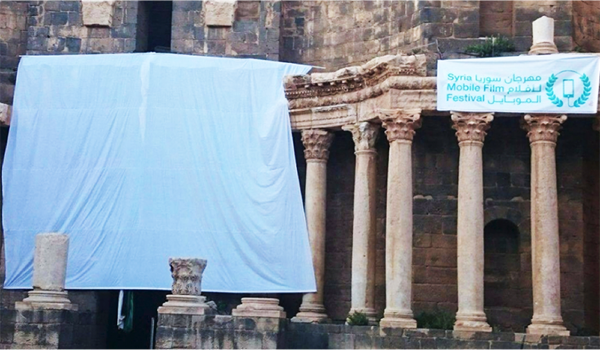
Next Stage: Your Help is Needed to Continue this Important Work
ASOR is very pleased with the work that has been completed to date. As Irina Bokova, the secretary general of UNESCO, observed in her plenary remarks at a June conference in Berlin: Syria’s cultural heritage is indivisible. Amr al Azm, a co-investigator for ASOR CHI, gave one of the concluding addresses at that conference and expanded upon Bokova’s observation. He pointed out that Syrian cultural heritage brings together factions and fighting ethnic groups. Cultural heritage can be a unifying force in peace-making and community cohesion.
While the ASOR community is heartened by the progress that has been made, we are looking for ways to continue these critical and important efforts. We need to raise $30,000 for an additional six months of funding for the Bosra al Sham Antiquities Department. We hope that you will consider supporting this project’s transformative objectives and the preservation and protection of universal cultural rights.
Other ways you can donate:
Donate by Phone
Call ASOR at 857-277-1174
Donate by Mail
Send a check to:
ASOR
P. O. Box 15729
Boston, MA 02215
Make a Pledge (Donate Later)
Send an e-mail to ASOR
